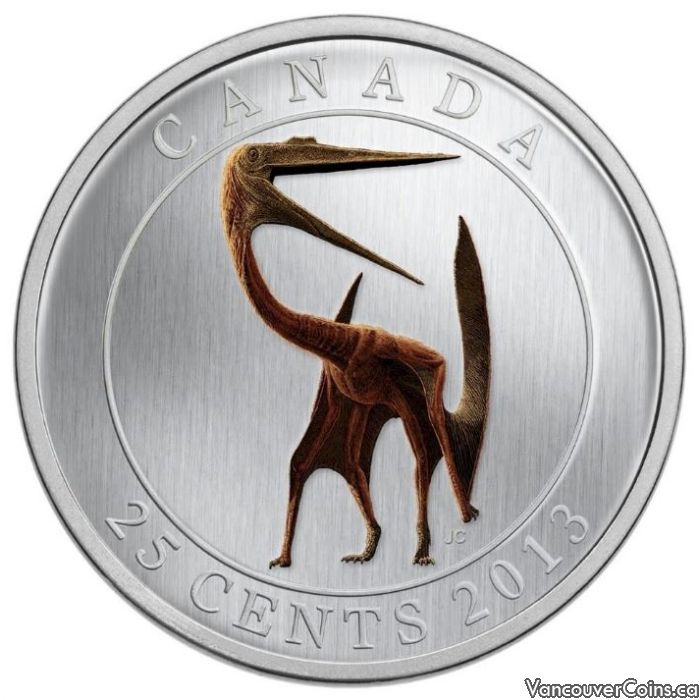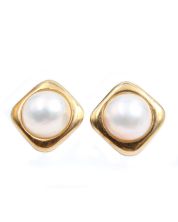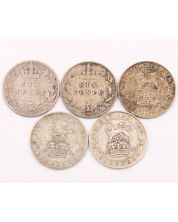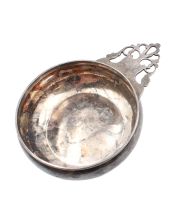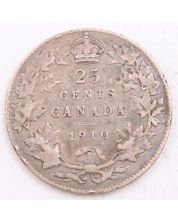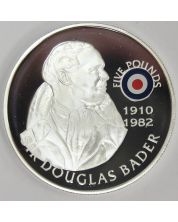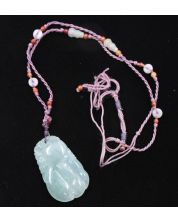2013 Canada 25-cent Prehistoric Animals - Quetzalcoatlus Dinosaur
In stock
SKU
rcm10-39
CA $15.00
Glow-in-the-Dark Cupronickel Coin
2013 Canada 25-cent Prehistoric Animals - Quetzalcoatlus Dinosaur Glow-in-the-Dark Cupronickel Coin
Note: Missing outer beauty box.
Across the plains and highlands of the Western Interior Seaway that covered the centre of the North American continent more than 65 million years ago soared one of the largest animals ever to take to the air: Quetzalcoatlus. This pterosaur from the Late Cretaceous period was a large, lightweight lizard with a long, stiff neck, a sharp bill, and a wingspan of up to 10 metres (33 feet).
This unique painted cupronickel coin has a diameter of 35 mm and includes a unusual photo-luminescent feature. Designed by artist Julius Csotonyi, with the technical guidance of paleontologists at Alberta's Royal Tyrell Museum, the reverse side of this painted coin illustrates paleontologists' rendition of what Quetzalcoatlus. probably looked like. Centered within a raised circular frame, the amazing pterosaur's head, dominated by an exceptionally long open beak, is viewed from its right side, its right eye gazing at the viewer. Its head sits atop a long, stiff neck leading to a powerful chest and shoulders, long legs and its massive folded, bat-like wings. When the coin is removed from natural light, however, we see the skeleton upon which paleontologists have based their illustration. In the glow-in-the-dark image, the huge flying beast is transformed into a delicate skeleton composed of lightweight slender bones that rendered the large beast light enough to remain airborne. The frame surrounding the image features the embossed word 'CANADA,' the date '2013,' and the face value of '25 CENTS.' The obverse features the effigy of Her Majesty Queen Elizabeth II by Susanna Blunt.
Specifications:
Item number: 118632
Face Value: 25 cents
Mintage: 30,000
Composition: Cupronickel
Diameter (mm): 35
Edge: Plain
Finish: Specimen with colour
Special Features:
- This distinctive cupronickel coin is the second in this new series of coloured Prehistoric Creatures coins featuring photo-luminescent elements.
- Designs approved by the Royal Tyrrell Museum of Palaeontology, Alberta. - Photo-luminescence in a glow-in-the-dark technology.
- Although sunlight is best, the fluorescent and incandescent lights found in most households can also be used to activate the special photo-luminescent ink that makes the bones of the dinosaur glow. For best results, place the coin in these light sources for 30 - 60 seconds then bring it into the dark to reveal the skeleton of the dinosaur.
- The photo-luminescent (glow-in-the-dark) technology can be activated through the capsule and does not wear.
- Comes with custom-packaged dinosaur-themed sleeve.
Packaging:
Coin is encapsulated and presented in a Royal Canadian Mint branded maroon clamshell case lined with black flock
Note: All Coins are pre-owned and capsules, sleeves and coins may have scratches or other defects not mentioned in the description, the clamshell boxes or outer boxes may have wear or scratches
Note: Missing outer beauty box.
Across the plains and highlands of the Western Interior Seaway that covered the centre of the North American continent more than 65 million years ago soared one of the largest animals ever to take to the air: Quetzalcoatlus. This pterosaur from the Late Cretaceous period was a large, lightweight lizard with a long, stiff neck, a sharp bill, and a wingspan of up to 10 metres (33 feet).
This unique painted cupronickel coin has a diameter of 35 mm and includes a unusual photo-luminescent feature. Designed by artist Julius Csotonyi, with the technical guidance of paleontologists at Alberta's Royal Tyrell Museum, the reverse side of this painted coin illustrates paleontologists' rendition of what Quetzalcoatlus. probably looked like. Centered within a raised circular frame, the amazing pterosaur's head, dominated by an exceptionally long open beak, is viewed from its right side, its right eye gazing at the viewer. Its head sits atop a long, stiff neck leading to a powerful chest and shoulders, long legs and its massive folded, bat-like wings. When the coin is removed from natural light, however, we see the skeleton upon which paleontologists have based their illustration. In the glow-in-the-dark image, the huge flying beast is transformed into a delicate skeleton composed of lightweight slender bones that rendered the large beast light enough to remain airborne. The frame surrounding the image features the embossed word 'CANADA,' the date '2013,' and the face value of '25 CENTS.' The obverse features the effigy of Her Majesty Queen Elizabeth II by Susanna Blunt.
Specifications:
Item number: 118632
Face Value: 25 cents
Mintage: 30,000
Composition: Cupronickel
Diameter (mm): 35
Edge: Plain
Finish: Specimen with colour
Special Features:
- This distinctive cupronickel coin is the second in this new series of coloured Prehistoric Creatures coins featuring photo-luminescent elements.
- Designs approved by the Royal Tyrrell Museum of Palaeontology, Alberta. - Photo-luminescence in a glow-in-the-dark technology.
- Although sunlight is best, the fluorescent and incandescent lights found in most households can also be used to activate the special photo-luminescent ink that makes the bones of the dinosaur glow. For best results, place the coin in these light sources for 30 - 60 seconds then bring it into the dark to reveal the skeleton of the dinosaur.
- The photo-luminescent (glow-in-the-dark) technology can be activated through the capsule and does not wear.
- Comes with custom-packaged dinosaur-themed sleeve.
Packaging:
Coin is encapsulated and presented in a Royal Canadian Mint branded maroon clamshell case lined with black flock
Note: All Coins are pre-owned and capsules, sleeves and coins may have scratches or other defects not mentioned in the description, the clamshell boxes or outer boxes may have wear or scratches

